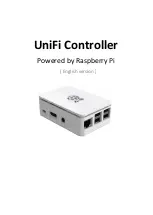
48
Philips Semiconductors
Preliminary User Manual
LPC2119/2129/2292/2294
ARM-based Microcontroller
4. SYSTEM CONTROL BLOCK
SUMMARY OF SYSTEM CONTROL BLOCK FUNCTIONS
The System Control Block includes several system features and control registers for a number of functions that are not related
to specific peripheral devices. These include:
• Crystal Oscillator.
• External Interrupt Inputs.
• Memory Mapping Control.
• PLL.
• Power Control.
• Reset.
• VPB Divider.
• Wakeup Timer.
Each type of function has its own register(s) if any are required and unneeded bits are defined as reserved in order to allow future
expansion. Unrelated functions never share the same register addresses.
PIN DESCRIPTION
Table 11 shows pins that are associated with System Control block functions.
Table 11: Pin summary
Pin name
Pin direction
Pin Description
X1
Input
Crystal Oscillator Input-
Input to the oscillator and internal clock generator circuits.
X2
Output
Crystal Oscillator Output-
Output from the oscillator amplifier.
EINT0
Input
External Interrupt Input 0-
An active low general purpose interrupt input. This pin may be
used to wake up the processor from Idle or Power down modes.
LOW level on this pin immediately after reset is considered as an external hardware
request to start the ISP command handler. More details on ISP and Flash memory can be
found in "Flash Memory System and Programming" chapter.
EINT1
Input
External Interrupt Input 1-
See the EINT0 description above.
EINT2
Input
External Interrupt Input 2-
See the EINT0 description above.
EINT3
Input
External Interrupt Input 3-
See the EINT0 description above.
RESET
Input
External Reset input-
A low on this pin resets the chip, causing I/O ports and peripherals
to take on their default states, and the processor to begin execution at address 0.
















































